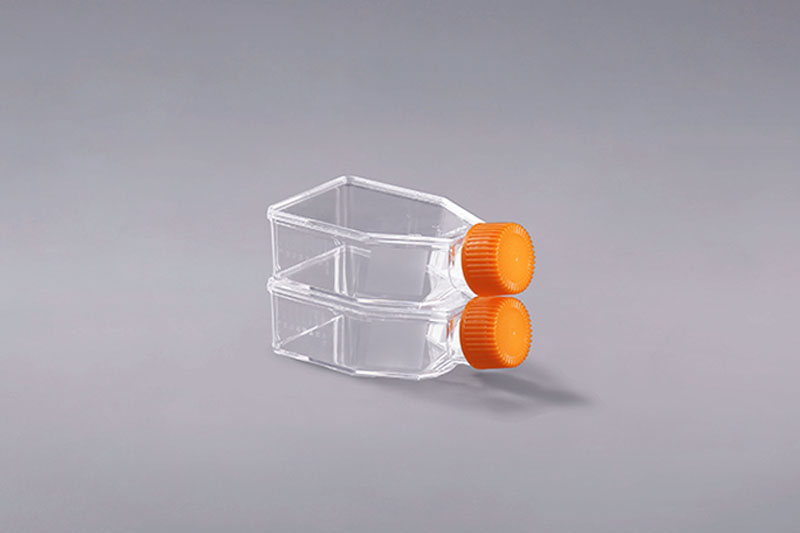When culturing cells, we often encounter problems of one kind or another, such as cells not adhering to the wall, cell contamination or even death. Among them, precipitation in cell culture flasks is also a common problem. If precipitation occurs, it may be caused by a change in concentration or calcium salts.
Concentration: When culturing cells, the medium is an essential nutrient. If the medium evaporates, the concentration of its components (including salts) will increase, especially the surface of the medium may easily form crystal precipitates. To avoid concentration changes, we first ensure that the cell culture flask does not experience evaporation, and always monitor the driving effect of the incubator to avoid dehydration.
Calcium salts: When preparing serum-free media, the order in which components are added may lead to the formation of insoluble molecules. Calcium salts are especially prone to precipitation, such as the reaction of CaCl2 and MgSO4 in solution to produce CaSO4 crystals. Autoclaving and pH instability can exacerbate this problem. To avoid this, we can dissolve the CaCl2 separately in deionized water before adding other medium components one by one; or we can add buffer to avoid changes in osmotic pressure.
Of course, changes in concentration or calcium salts are only two reasons for precipitation in cell culture flasks, but there may also be other causes, such as extreme changes in temperature or metal supplements. After understanding the cause of precipitation, we can reduce the occurrence of precipitation from the operation and ensure the progress of the experiment.
The FAI climbed 5.9 percent year-on-year in the first 11 months of 2018, quickening from the 5.7-percent growth in Jan-Oct, the National Bureau of Statistics (NBS) said Friday in an online statement.
The key indicator of investment, dubbed a major growth driver, hit the bottom in August and has since started to rebound steadily.
In the face of emerging economic challenges home and abroad, China has stepped up efforts to stabilize investment, in particular rolling out measures to motivate private investors and channel funds into infrastructure.
Friday's data showed private investment, accounting for more than 60 percent of the total FAI, expanded by a brisk 8.7 percent.
NBS spokesperson Mao Shengyong said funds into weak economic links registered rapid increases as investment in environmental protection and agriculture jumped 42 percent and 12.5 percent respectively, much faster than the average.
In breakdown, investment in high-tech and equipment manufacturing remained vigorous with 16.1-percent and 11.6-percent increases respectively in the first 11 months. Infrastructure investment gained 3.7 percent, staying flat. Investment in property development rose 9.7 percent, also unchanged.
 English
English




















































